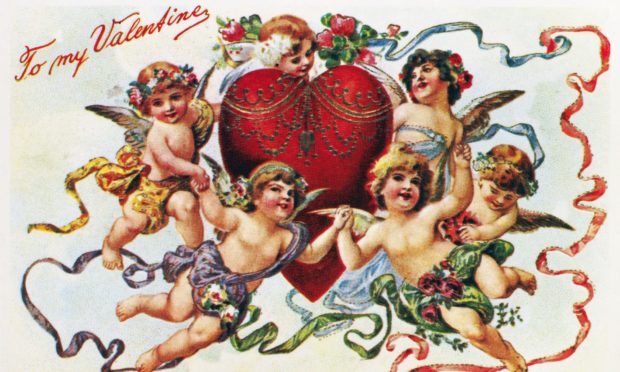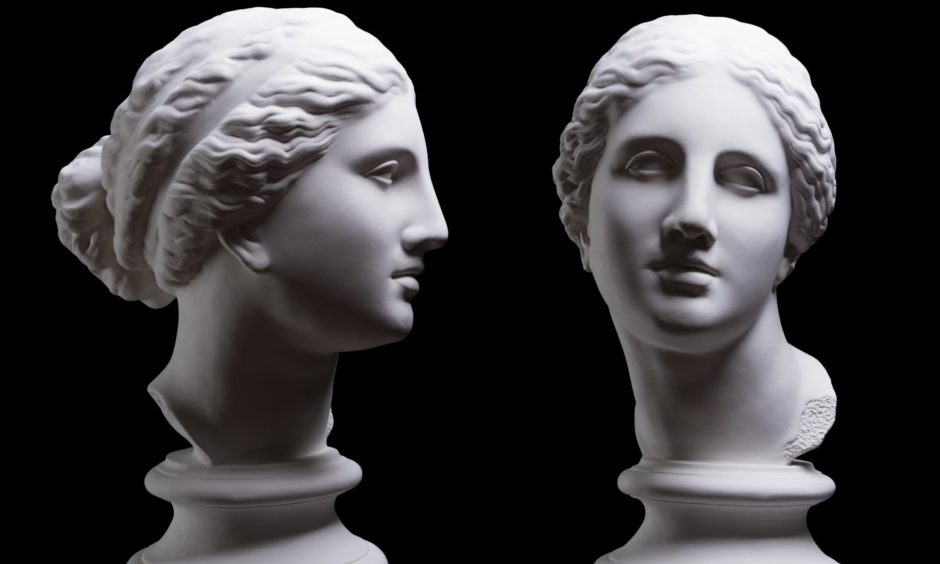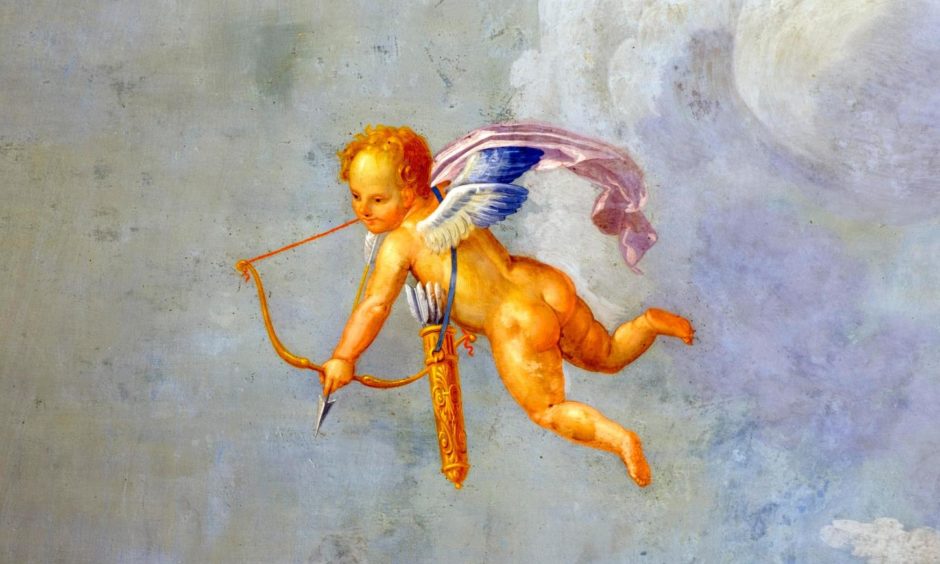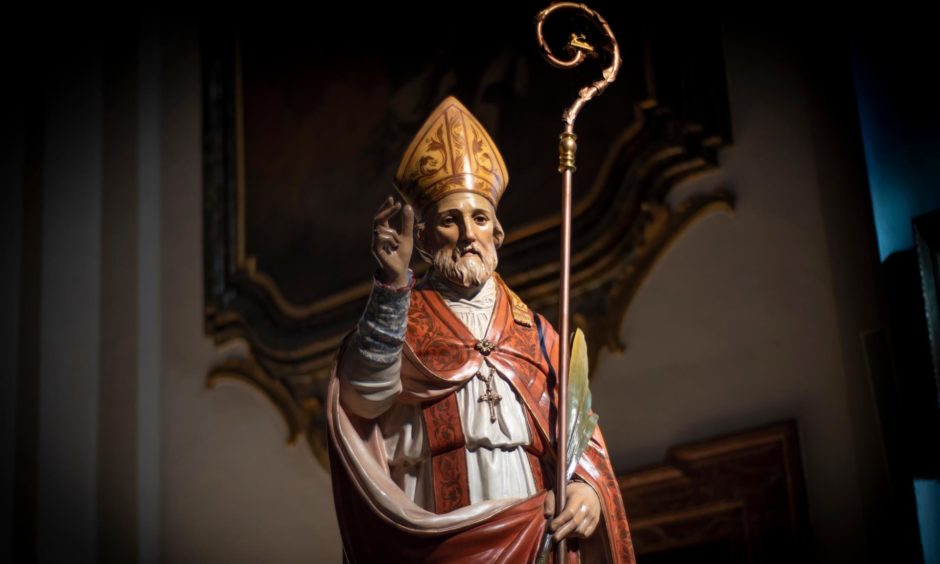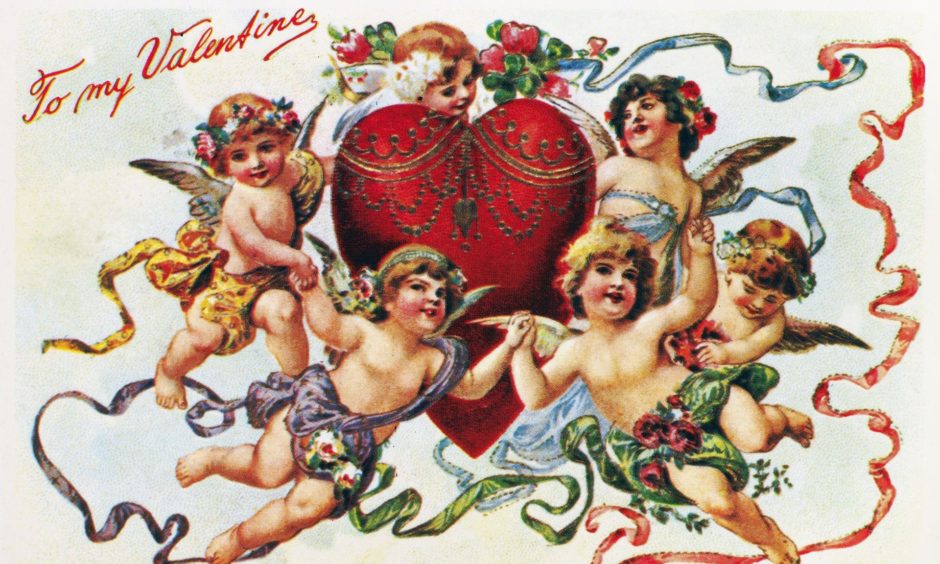From red roses to hearts and arrows, Valentine’s Day has been celebrated since the 5th Century. But where did the traditions originate?
Red roses are traditionally given as a sign of love and affection on Valentine’s Day and according to Kevin Frediani, curator of the University of Dundee Botanic Garden, they have a language all of their own.
He says that while red is the colour of the heart, white roses are meant to send a message: “If you’ve ever been given a white rose, it’s meant to mean ‘I’m the one for you’.”
The rose as a sign of passion can be traced back to Greek and Roman mythology. Kevin explains: “I think the origin of roses was picked up in the late Middle Ages but if you go back even further, roses are associated with Aphrodite, who is the goddess of love in Greek mythology.
He goes on to say that while red is the colour of the heart, white roses are meant to send a message: “If you’ve ever been given a white rose, it’s meant to mean ‘I’m the one for you’.”
‘A lasting connection’
The rose as a sign of passion can be traced back to Greek and Roman mythology. Kevin says: “I think the origin of roses was picked up in the late Middle Ages but if you go back even further, roses are associated with Aphrodite, who is the goddess of love in Greek mythology.
“When I did botanical Latin, red plants were associated with Adonis. You often get this as a Latinised name, either at the beginning or the end, and that’s the blood of Adonis and the love of Aphrodite.”
He goes on: “In terms of the gift of time that’s put into growing something, then given to somebody else – this in itself is beautiful. Also, the rose has a scent with it, which gives a lasting connection.
Who is Aphrodite?
Aphrodite was the Greek goddess of love and her son was the winged god Eros. They became known as Venus and Cupid in Roman mythology.
Gods and goddesses were usually born in spectacular fashion and Aphrodite emerged fully-grown from the foam of the sea, carried to the shore on a large shell. We still use the term aphrodisiac today – especially when describing sea food.
Origins of the red rose
Aphrodite witnessed the tragic death of her lover Adonis – a handsome young mortal who had won her heart. One day, while he was out hunting, he was attacked and killed by a wild boar. All roses had been white until this day, but as Aphrodite ran to her lover’s aid she pricked her foot on the flower’s thorn and her blood tuned its petals red. The red rose has represented passion ever since.

Anemones also feature in this tale of woe, with legend stating the delicate flowers sprang from blood of Adonis as he lay dying. The word Adonis is still a term used to describe an attractive man.
Who is Cupid?
How can we forget the famous flying infant with his bow and arrow? Aphrodite had a number of children and one was Eros – who was renamed Cupid by the Romans. His origins are uncertain and one story goes that his father was the divine winged messenger Hermes (or Mercury in Roman times).
He started out being represented as a youth but gradually became the younger version we now know today. He was also a god of love and it was said a wound from one of his arrows could induce love. Cupid fell in love with the beautiful mortal Psyche. But that’s another tale.
Who is St Valentine?
The identity of the original Saint Valentine remains unconfirmed as there were at least two Christian martyrs of this name in the 3rd Century under the rule of the Roman Emperor Claudius II Gothicus.
Christians were persecuted by the Roman Empire until the Emperor Constantine legalised the religion during his reign in the 4th Century. In time, it became the official belief system of the empire.
One story goes that Saint Valentine was a priest who continued to marry couples in secret after Claudius II outlawed marriage (because young, married men apparently made poor soldiers). Before he was executed, he befriended his jailer’s daughter – they may even have fallen in love. He signed a letter to her: “from your Valentine”.
Martyrs were sainted – or canonised – by upholders of the Christian faith to recognise the suffering they had endured for their religion. Saint Valentine eventually became known as the patron saint of lovers, epilepsy sufferers, and beekeepers.
Why do we celebrate St Valentine’s Day on February 14?
Now a global commercial phenomenon, as with many of our celebrations, Valentine’s Day is a mixture of pagan and Christian celebrations.
The Romans celebrated a festival in mid-February called Lupercalia. It heralded the impending arrival of spring.
Lupercalia was based around fertility rituals and men and women were paired off with names being drawn from an urn. In the year 469, Pope Gelasius I replaced it with a feast in honour of Saint Valentine, making it fall into Christian calendar.
Throughout the Middle Ages, Valentine’s Day became known as day of romance and, by the 1500s, formal messages of love and affection were exchanged along with gifts.
By the Victorian era, the use of printing technology as well as the ability to post cards meant Valentine’s greetings became more widespread. Cards dating from the 19th Century depicted cupid, the winged god of love, as well as hearts, flowers and even lace.
